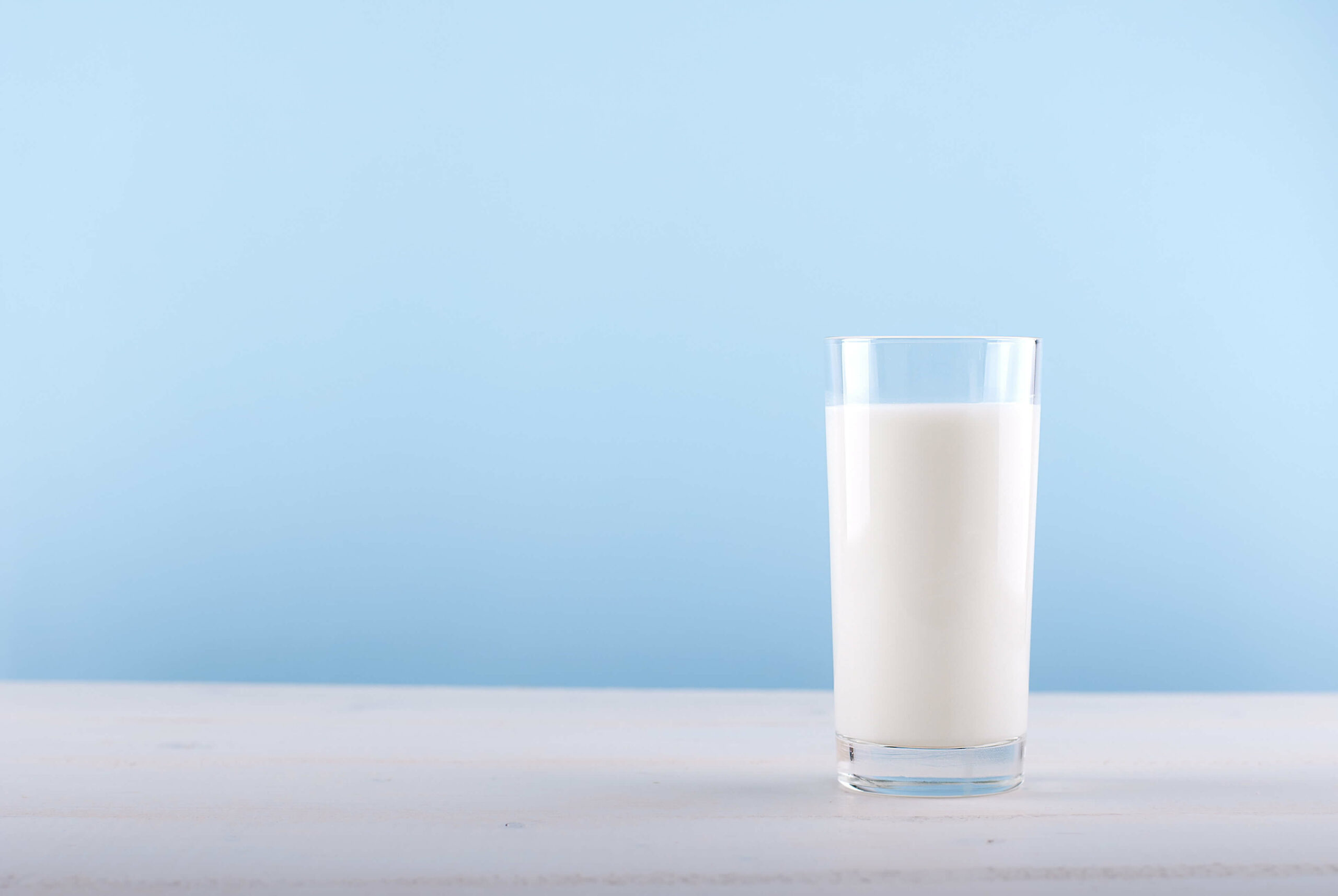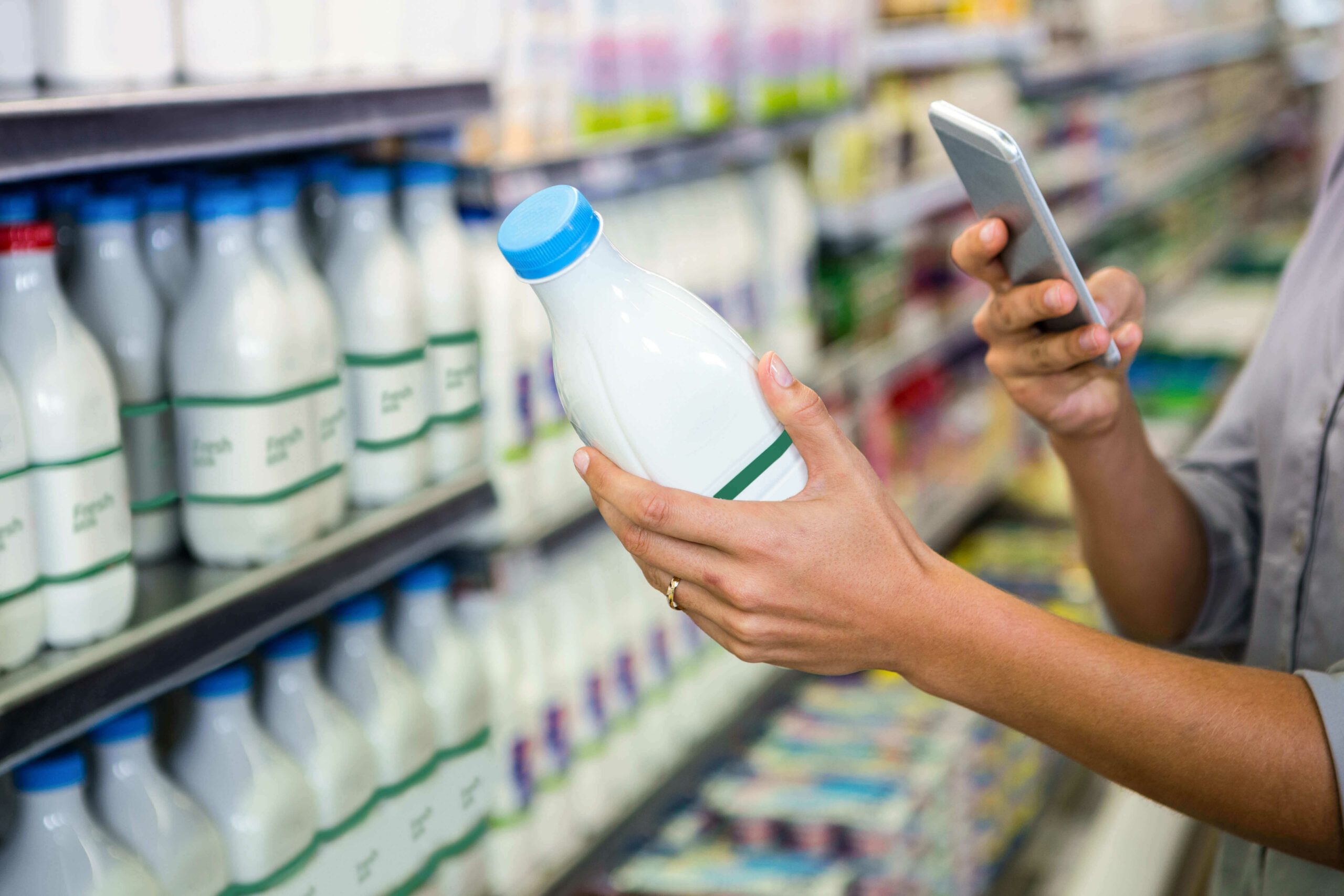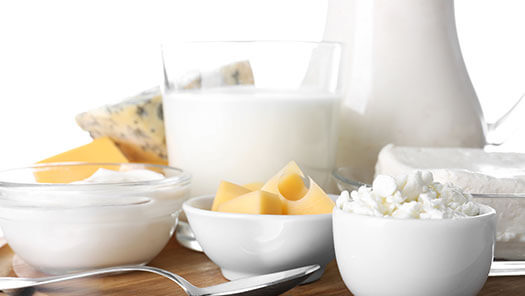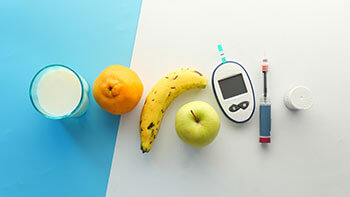Holistic Health Benefits of the Milk Matrix: Beyond Individual Nutrients For many years, nutrition research focused on how individual nutrients,..
GET THE FACTSDiabetes Prevention And Milk
How milk plays a role in preventing type 2 diabetes
More than 5.7 million Canadians have diabetes and about 90 percent have type 2 diabetes. An additional six million Canadians are living with prediabetes—a condition that can develop into type 2 diabetes if it’s not properly managed.1,2,3
Prediabetes and type 2 diabetes (T2D) can be managed with combination of proper nutrition, physical activity, stress reduction, medication (when needed) and careful blood sugar monitoring.4 The dietary pattern for diabetes prevention and management includes: This article will explore the role of milk and dairy foods in the prevention of T2D. It includes the potential mechanisms through which milk and dairy foods may play a role in reducing the risk of developing type 2 diabetes. Milk contains protein and 14 essential vitamins and minerals including: Dairy foods likely protect against T2D due to their combination of calcium, magnesium, vitamin D and protein, which help reduce body fat and insulin resistance.6 There is no evidence that saturated fat from full-fat dairy foods is associated with an increased risk of insulin resistance or T2D.7 In fact, a meta-analysis showed that a high intake of dairy foods was associated with a significant decrease in the risk of T2D.8 Milk contains a naturally occurring sugar called lactose. Lactose has a glycemic index (GI) of 46, which is considered low.9 The GI is a scale that ranks carbohydrate-containing foods and beverages by how much they raise blood sugar levels. Diabetes Canada advises choosing foods with a low glycemic index (<55) most often, since low GI diets may decrease risk of type 2 diabetes. Milk contains a naturally occurring sugar called lactose. Lactose has a glycemic index (GI) of 46, which is considered low.9 The GI is a scale that ranks carbohydrate-containing foods and beverages by how much they raise blood sugar levels. Diabetes Canada advises choosing foods with a low glycemic index (<55) most often, since low GI diets may decrease risk of type 2 diabetes. Type 2 diabetes risk reduction: Many studies have shown a reduced risk of developing type 2 diabetes in people who consume sufficient dairy foods.12,13,14,15 A meta-analysis looked at 21 studies and a total of 44,474 T2D cases. The analysis showed a significant inverse association in developing diabetes in those who consumed more dairy vs. least dairy. Each additional daily 200 g of dairy products was inversely associated with diabetes risk.16 Other studies have shown that 200-400 grams of dairy foods daily are linked to the largest reduction in T2D risk.17,18 A narrative review of cohort studies suggests up to a 15 percent decrease in the risk of developing T2D in people who have three servings of dairy foods per day.19 The benefits are attributed primarily to a low-fat dairy, yogurt and possibly to cheese. Another meta-analysis found high-quality evidence linking intakes of low-fat dairy and yogurt with a reduced risk of T2D.20 Studies also indicate that total intake of dairy foods, including whole-fat dairy foods like milk, cheese and yogurt, is associated with a lower risk of T2D and lower risk of high blood pressure.21,22 Another study found that high-fat dairy was protective against prediabetes, while neutral associations were seen for low-fat dairy types.23 Some of the main risk factors for developing T2D are hypertension, metabolic syndrome and obesity. Since dairy products can contribute to reducing these risk factors, they also help reduce T2D. Here are some mechanisms at work: Consuming dairy foods within a balanced diet can help lower risk for T2D. When patients ask for nutrition advice for diabetes prevention, start with these tips. There’s high-quality scientific evidence to show that dairy foods are associated with a reduced risk of T2D. Patients can be advised to enjoy consuming dairy foods within a balanced diet, and get the benefits of nutrients such as protein, calcium, vitamin D, dairy fat and bioactive compounds. The protective role of dairy in the development of T2D is thought to be largely attributable to the dairy matrix.
Overview of the nutrients in milk
Fat in milk
Lactose in milk
Research on the link between milk and T2D
Why do dairy foods help reduce T2D risk?
Practical tips:
CITATIONS
Resources
Milk and Mucus
Milk and Mucus The current body of research indicates that milk and other dairy foods do not increase mucus production...
GET THE FACTSMilk and Pediatric Nutrition
MILK AND PEDIATRIC NUTRITION Growing Strong: The Importance of Milk to Nourish Children Leading pediatric and health organizations recognize the..
GET THE FACTSMilk and Physical Activity
Milk and Physical Activity Whether your patients are occasional gym-goers or are training intensely for a triathlon or sport tournament,..
GET THE FACTSMilk and Lactose Intolerance
Milk and Lactose Intolerance Having lactose intolerance does not mean your patients need to give up dairy Highlights: Evidence shows..
GET THE FACTSMilk and Hypertension
MILK AND BLOOD PRESSURE Milk plays a role in disease prevention for many chronic conditions, including heart disease and hypertension...
GET THE FACTSDairy and Colorectal Cancer
DAIRY AND COLORECTAL CANCER Colorectal cancer is the second leading cause of cancer-related deaths in men and the third in..
GET THE FACTSHeart Health Benefits Of Milk
Heart Health Benefits Of Milk Diet and lifestyle play a role in heart disease prevention. It is estimated that 80%..
GET THE FACTSMilk and Plant Based Drinks
MILK AND PLANT BASED DRINKS There are many different plant-based beverages (PBB) available in the grocery store and it is..
GET THE FACTSDisease Prevention
Disease Prevention Milk plays a role in disease prevention for many chronic conditions, including heart disease, hypertension, type 2 diabetes..
GET THE FACTSMilk Nutrition Facts
Milk Nutritions Facts Milk is a source of essential nutrients. There is extensive evidence to show that including milk and..
GET THE FACTSRESOURCES
Download useful resources, research studies, and fact sheets on the benefits of dairy

Nutrients in Dairy
As a source of complete protein and essential nutrients, drinking milk is a simple way to support optimal health.

Dairy and Disease Prevention
Naturally nutrient dense, milk helps to combat nutrition deficiencies and ward off heart disease, hypertension, and colorectal cancer.

Dairy Milk and Plant Based Beverages
All forms of milk, including lactose-free milk, contain complete protein, vitamins, and minerals.

Heart Health Benefits of Milk
It is estimated that 80% of heart disease cases can be prevented with lifestyle changes that include a nutritious diet, regular exercise, and smoking cessation.

Dairy and Colorectal Cancer
Studies have shown that high consumption of total dairy products and total milk was associated with a lower risk of developing colorectal cancer.

Milk and Hypertension
Milk plays a role in disease prevention for many chronic conditions, including heart disease and hypertension. Learn how adding milk into your patients’ diets can help with blood pressure management.

Milk and Lactose Intolerance
Some people have trouble digesting lactose, but that doesn’t mean giving up dairy! Read on to learn more about lactose intolerance, how it’s formally diagnosed, and how you can provide the best nutrition advice to patients.

Milk and Physical Activity
Milk has a unique combination of nutrients that make it the ideal beverage for post-exercise rehydration and protein synthesis.

Milk and Pediatric Nutrition
Leading pediatric and health organizations recognize the benefits of milk and dairy foods for early childhood. Just how much milk is recommended for children, and which nutrients will kids get from a tall glass of milk?

Milk and Mucus
When a runny nose or congestion appears, many people believe they need to cut out milk to reduce mucus. It turns out that this is a myth, and studies show that milk does not cause mucus.

Diabetes Prevention and Milk
Take a closer look at the role of milk in the prevention of T2D. There are potential mechanisms through which milk and dairy foods may play a role in reducing the risk of developing type 2 diabetes





